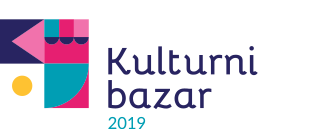BOOKS AND HANDBOOKS
• Bamfort, A. (2006). The Wow Factor: Global research compedium on the impact of the arts in education. Munster: Waxmann.
• Bresler, L. (ur.) (2007). International Handbook of Research in Arts Education. Dordrecht: Springer.
• Czejkowska, A. (ed). (2012). mapping culture. Aspekte der Kulturvermittlung in Südosteuropa Arts & Culture & Education. KulturKontakt Austria, Vienna: Löcker Verlag, Vol. 8.
• Devjak, T., Batistič Zorec, M., Vogrinc, J. Skubic, D. in Berčnik, S. (ur.). (2010). Pedagoški koncept Reggio Emilia in kurikulum za vrtce: podobnosti v različnosti. Ljubljana: Pedagoška Fakulteta Univerze v Ljubljani.
• EACEA. (2008). Access of young people to culture. Final report.
• European agenda for culture - Open method of coordination (OMC). (2012). A report on policies and good practices in the public arts and in cultural institutions to promote better access to and wider participation in culture.
• European agenda for culture - Open method of coordination (OMC). (2014). A report on the role of public arts and cultural institutions in the promotion of cultural diversity and intercultural dialogue.
• European agenda for culture - Open method of coordination (OMC). (2014). Policy handbook on promotion of creative partnerships.
• Edward, C., Gandini, L. in Forman, G. (ur.) (1998). The Hundred Languages of Children: The Reggio Emilia Approach – Advanced Reflections. London: Ablex Publishing.
• Schiller, F. (2003). O estetski vzgoji človeka. Ljubljana: Študentska založba.
• Vrbovšek, B. in dr. (ur.) (2006). Umetnost v kurikulu vrtca. Ljubljana: Supra.


.thumb-200x106.jpg)